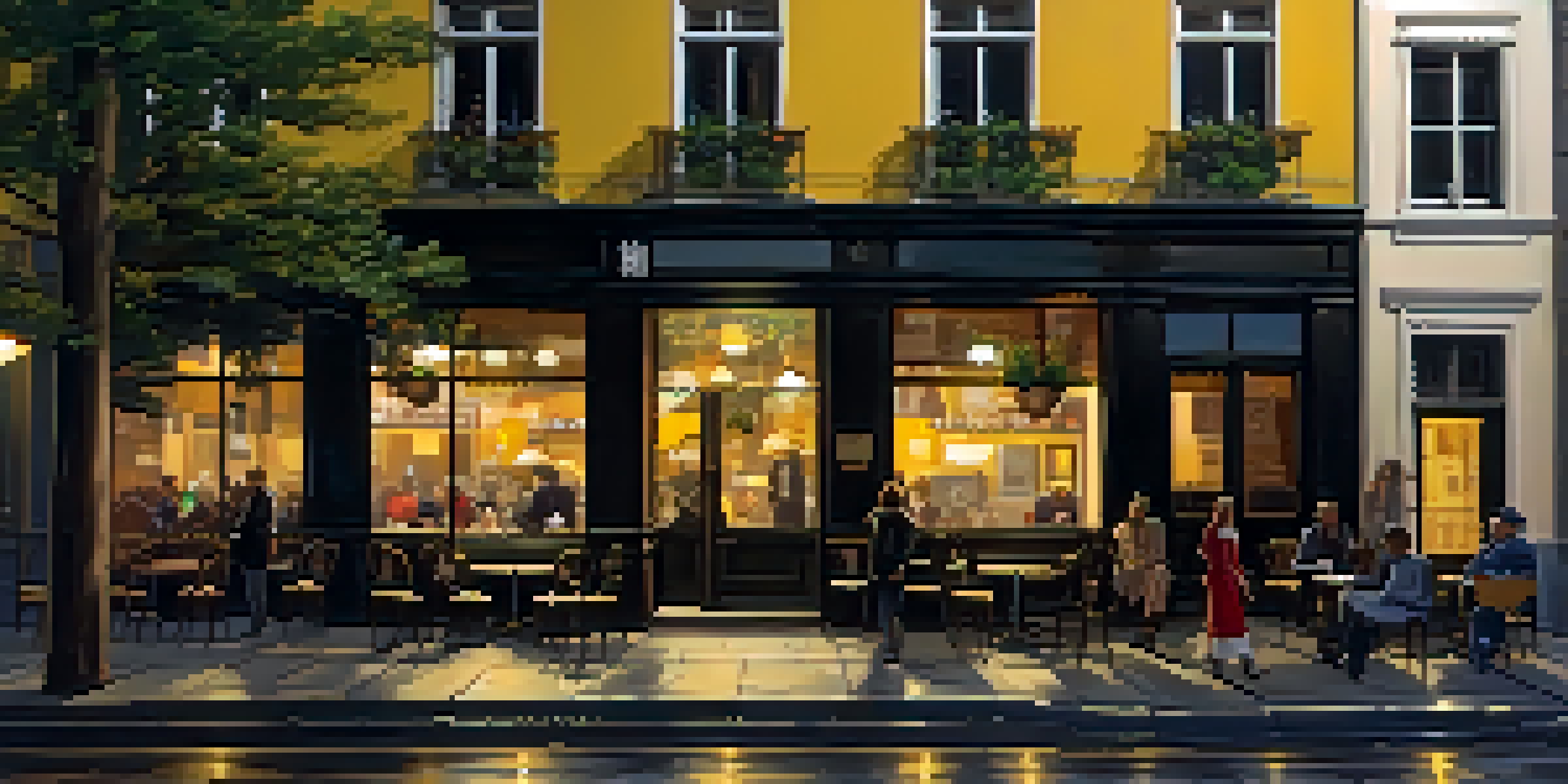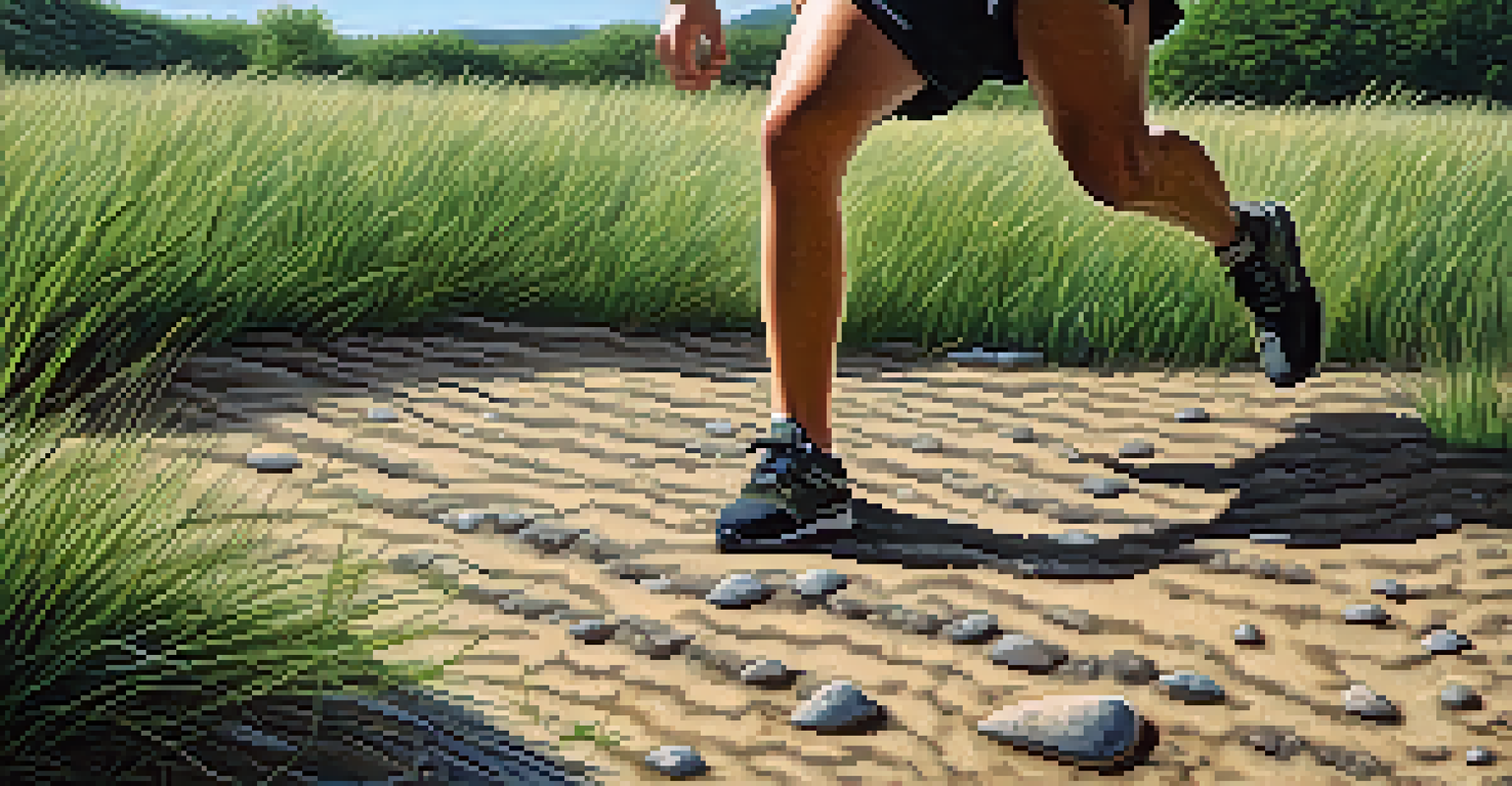Understanding Natural Surroundings for Better Self Defense Tactics

The Importance of Awareness in Self Defense
Awareness is the cornerstone of effective self-defense. Being attuned to your surroundings allows you to identify potential threats before they escalate. This means not just noticing people, but also observing your environment, including exits, obstacles, and even potential weapons.
Awareness is the beginning of self-defense.
Consider a bustling street: a well-lit cafe can provide a safe haven, while an alleyway might pose risks. By recognizing these factors, you can make informed decisions about where to go and how to react. This awareness serves as your first line of defense.
In essence, cultivating awareness transforms you from a passive observer into an active participant in your safety. It’s about understanding the dynamics around you, which can significantly enhance your self-defense strategies.
Using Natural Obstacles to Your Advantage
Natural surroundings are filled with obstacles that can be used to your advantage in self-defense scenarios. Trees, benches, and even park structures can serve as barriers between you and a potential threat. These elements can create distance and provide you with a moment to assess the situation or escape.

Imagine you're in a park and someone approaches aggressively. Instead of panicking, you can maneuver around a tree, using it as a shield while you plan your next move. This gives you a tactical edge, allowing you to control the interaction rather than react blindly.
Awareness is Key to Safety
Being aware of your surroundings helps you identify potential threats and make informed decisions to protect yourself.
Leveraging natural obstacles not only enhances your safety but also empowers you. It reminds you that you have options, and that the environment can be a powerful ally when you remain calm and strategic.
The Role of Terrain in Self Defense
Terrain plays a crucial role in self-defense tactics. Different surfaces—like gravel, grass, or uneven ground—affect your mobility and balance. Understanding how to navigate these terrains can give you an upper hand when you need to evade or escape.
In every walk with nature, one receives far more than he seeks.
For example, if you find yourself on a slippery surface, it’s wise to maintain a low center of gravity to avoid falling. Conversely, solid ground allows for quicker movements and better footing. Being aware of your surroundings helps you adapt your tactics to the terrain.
Ultimately, mastering the terrain can mean the difference between safety and vulnerability. It’s about reading the ground beneath your feet and using it to your advantage in any self-defense situation.
Natural Light and Its Impact on Safety
Natural light is often overlooked but plays a significant role in self-defense. Well-lit environments not only boost your visibility but also deter potential threats. Criminals are less likely to act in bright, open areas where they can be easily seen.
Imagine walking home at dusk; staying in well-lit streets can keep you safer than choosing dark alleyways. Positioning yourself in well-lit areas allows you to spot potential dangers early on, giving you time to react or escape.
Leverage Your Environment
Using natural obstacles, terrain, and light can enhance your self-defense strategies and provide tactical advantages.
Understanding the impact of natural light can empower your choices. By prioritizing well-lit pathways, you enhance your safety and reduce the chances of an encounter with a threat.
The Value of Sound in Your Environment
Sound is an often underappreciated aspect of self-defense. Being attuned to the noises around you can alert you to potential danger before you see it. For example, the sound of hurried footsteps or raised voices can signal something amiss long before you notice a physical threat.
Training yourself to listen actively can enhance your awareness. By filtering out background noise and focusing on unusual sounds, you can prepare yourself to react to any situation. This auditory awareness can be just as crucial as visual vigilance.
Incorporating sound into your self-defense strategy ensures that you are aware of your surroundings on multiple levels. It allows you to stay one step ahead, increasing your chances of staying safe.
Utilizing Local Flora and Fauna for Safety
Nature is full of elements that can aid your self-defense strategy. Familiarizing yourself with local flora and fauna can provide you with potential tools for safety. For instance, certain plants can be used to create barriers, while others may offer medicinal properties in emergencies.
Additionally, understanding the behavior of local wildlife can help you avoid dangerous encounters. Knowing which animals are present and how they react to humans can inform your movements in an area and help you navigate more safely.
Practice Builds Confidence
Regularly practicing self-defense in various natural settings prepares you for real-life situations and enhances your instincts.
By leveraging the natural world, you empower yourself with knowledge that can enhance your self-defense tactics. It’s about seeing the environment as a resource rather than just scenery.
Practicing Self-Defense in Natural Settings
Practicing self-defense techniques in natural settings is essential for building confidence and skill. These environments can simulate real-life scenarios where you may need to react quickly. Whether it’s a park, a beach, or a forest, training outdoors can prepare you for unexpected encounters.
Consider setting up drills that involve navigating around obstacles or responding to simulated threats in varied terrains. This hands-on experience allows you to adapt your techniques to different environments, enhancing your overall preparedness.

Ultimately, regular practice in natural settings cultivates a sense of familiarity and comfort. The more you train in diverse environments, the more instinctive your responses will become when faced with real challenges.
Creating a Personal Safety Plan Using Nature
Developing a personal safety plan that incorporates your natural surroundings is a proactive step towards self-defense. Start by assessing the areas you frequent and identifying safe spots—like public parks or well-populated streets—where you can seek help if needed.
Additionally, think about escape routes and safe havens within your local environment. Knowing where to go and how to get there quickly can make all the difference in a threatening situation. Your safety plan should be as dynamic as your surroundings.
Incorporating nature into your safety strategy not only enhances your preparedness but also instills a sense of confidence. It reminds you that you can navigate your environment intelligently, ensuring your well-being.